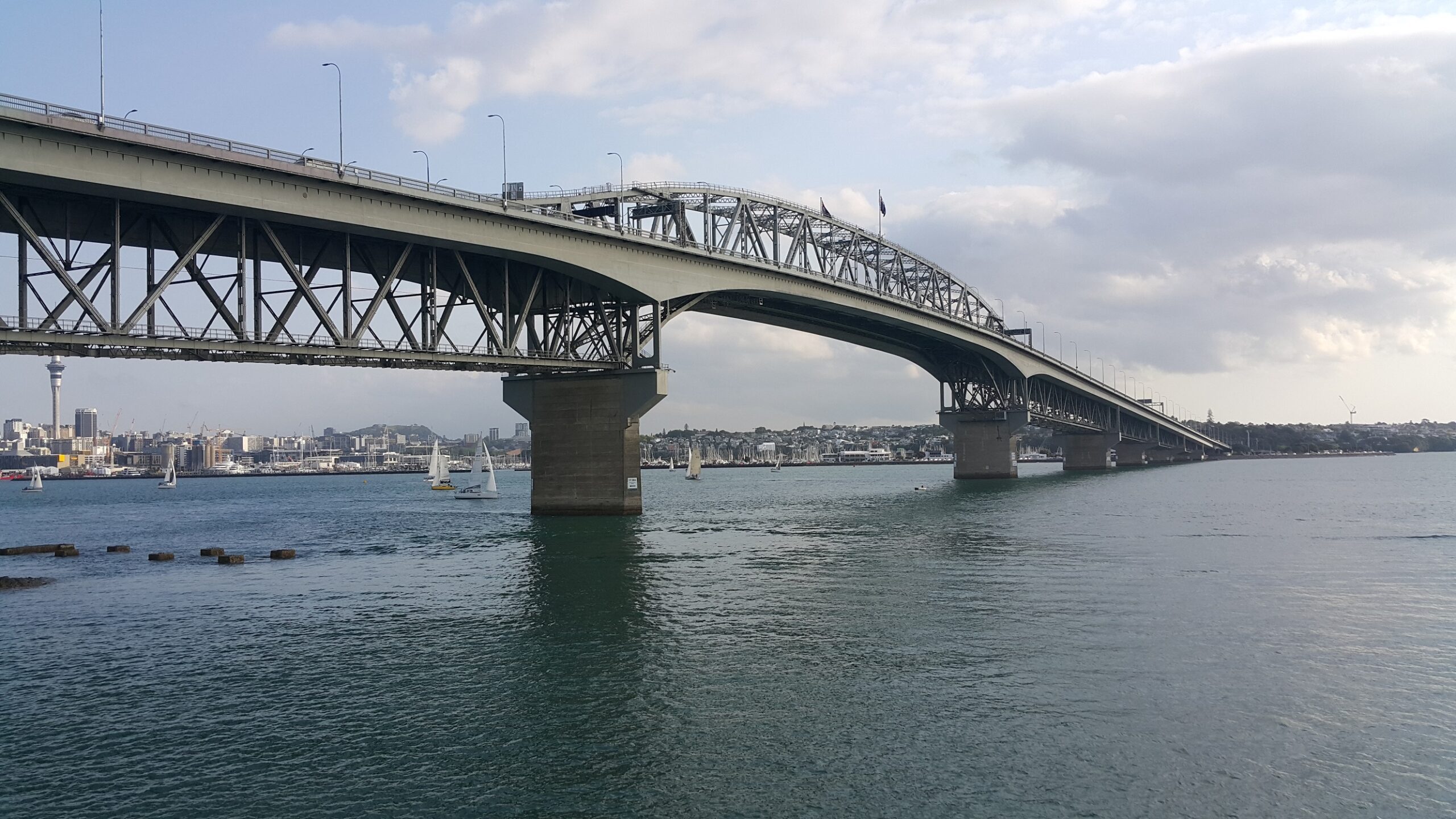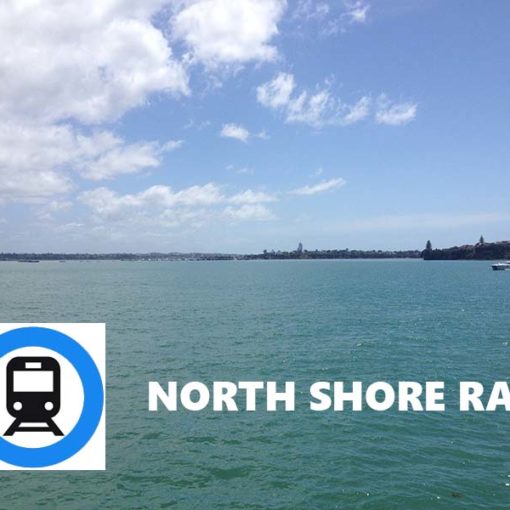The New Zealand Transport Agency in conjunction with Auckland Transport has released the Additional Waitemata Harbour Connections Business Case, which outlines serious proposals for rail-based mass transit to the North Shore.
What is being proposed?
The business case proposes a three-stage process, with the following stages:
- Busway enhancement from city centre to Albany
- Rail connection (tunnel) from city centre to Takapuna, Smales Farm and potentially to Albany
- SH1 capacity and resilience improvements
Busway improvements
The first proposal is to enhance the Northern Busway between the Auckland CBD and Albany. This consists of a suite of minor improvements to the Northern Busway to improve capacity. This is welcome, although we would point out that something the bus service changes in November 2018 did was reduce the level of peak hour bus service crossing the Auckland Harbour Bridge. The core Northern Express service (NX1) did not see a service level increase, while the NX2 service had 15 services per hour, compared with the 10 services per hour the former 881 service had. In addition, the myriad assortment of Express services that had once crossed the Auckland Harbour Bridge originating from the various bays had vanished without replacement. That capacity is still left given there has not been an increase in Northern Express service since the November 2018 service changes.
Rail connections
The recommended long-term programme is for the construction of a rail connection from the Auckland CBD through to Takapuna and Smales Farm with an eventual connection through to Albany. Light or heavy rail are options, although the report is clearly in favour of light rail with a connection through to the Dominion Road service.
As they say, however, the devil is in the detail. Page 81 of the report points out that a mere conversion of the Northern Busway to light-rail will only provide capacity for an extra 4,000 people per hour – or a 40% increase from 10,000 per hour to 14,000. It is expected this extra capacity would be gone in the late 2040s in a demand high scenario. While it appears that the busway south of Smales Farm would be retained, thus providing additional capacity, it is unlikely there would be much demand for the busway post the construction of the new rail-based corridor.
An alternate proposal was floated that would see a new light rail tunnel running underneath Manukau Road through to Onehunga. One of the benefits of this alternate proposal was with reduced on street running, greater capacity would be possible. This of course comes at significant cost.
SH1 capacity and resilience improvements
SH1 capacity and resilience improvements comes as two options:
- Widening of the existing Auckland Harbour Bridge corridor to ten lanes, with a five/five configuration.
- Development of two three lane road tunnels.
The CBT’s view
The CBT welcomes consideration of mass transit improvements to the North Shore. This is something that is long overdue.
Firstly, the CBT thinks that action needs to be undertaken sooner rather than later. The construction of an additional Waitemata Harbour Connection is going to be disruptive at both ends of the Waitemata and it would be much worse in a decade when the Northern Busway is bursting at the seams and quick fixes to keep it functioning while a more permanent solution is under construction is simply going to be disruptive and costly. This does not mean that improvements should not be made to the Northern Busway, but that the timetable for the additional Waitemata Harbour Connection should be accelerated from the current “beyond 2028” timeframe proposed in the Auckland Transport Alignment Programme.
Secondly, the CBT thinks that the mode used should be heavy rail as opposed to light rail. We are quite concerned the report focuses on connections from the Auckland CBD through to Albany and does not quite consider the necessity of extending North Shore rail either to Silverdale, Warkworth or even Wellsford. Light rail works well in an urban context for shorter trips, but it does not function quite so well for longer trips. The distance from the Auckland CBD through to Albany is 17.5 kilometres and as a light rail route would be among the longest in Australasia (by comparison, the longest light rail route in Australia is the route 75 tram in Melbourne at 22.8 kilometres).
One of the problems faced by light rail in longer trips is the maximum speed of the vehicles. Light rail vehicles such as the Bombardier Flexity 2 (as used in the Gold Coast) or the CAF Urbos 3 (as used in Sydney) have a maximum speed limit of 70 kilometres per hour. A road vehicle has a maximum speed limit of 100 kilometres per hour, while heavy rail can operate at a maximum speed of 160 kilometres per hour on New Zealand’s gauge.
The lower speed limit does not matter in an urban context for shorter trips where it is unlikely the light rail vehicle will hit its maximum speed. It does, however, matter in a suburban context for longer trips where it is competing against traffic that could run at 100km/h in free-flow conditions and where the status quo has vehicles that can operate at 80km/h .
For an example of how slow light rail vehicles can be in a longer distance context, one needs only to look at the world’s longest light rail route. This is the Coast Tram in Belgium, which is 67 kilometres long. Incidentally, no services run from end to end and the current timetable has services terminating in the middle at Oostende Station. For a passenger to travel from one end to the other, including a transfer at Oostende Station, takes 2 hours 18 minutes, for an average speed of 29.13 kilometres per hour. At such an average speed, the Auckland CBD to Albany trip would take 36 minutes, while the Auckland CBD to Silverdale trip would take 60 minutes.
On the other hand, heavy rail vehicles can and are much faster. Perth and Brisbane both use the same track gauge as New Zealand (Cape Gauge, being 3 foot 6 inches wide), and run services similar in distance to the Coast Tram; in the case of Perth, the Perth to Mandurah service and in the case of Brisbane, the Brisbane to Gold Coast service. The former covers 72 kilometres in 50 minutes (average speed 84 kilometres per hour) while the latter covers 89 kilometres in 1 hour 23 minutes (average speed 64 kilometres per hour).
In terms of road improvements, there is certainly a case to be made for road improvements between the North Shore and the Auckland CBD. The Auckland Harbour Bridge is an ageing piece of infrastructure and with all the various accoutrements added to it over the years is going to struggle to keep going. However, we agree this is not the key priority at present.
Conclusion
An additional Waitemata Harbour Connection is the one opportunity we have to get mass transit to the North Shore right. It needs to be a heavy rail connection that is sufficiently future proofed to enable expansion to points north, whether this be Silverdale, Warkworth or even Wellsford. Just as importantly, it needs to be built sooner rather than later to ensure disruption is minimised.

